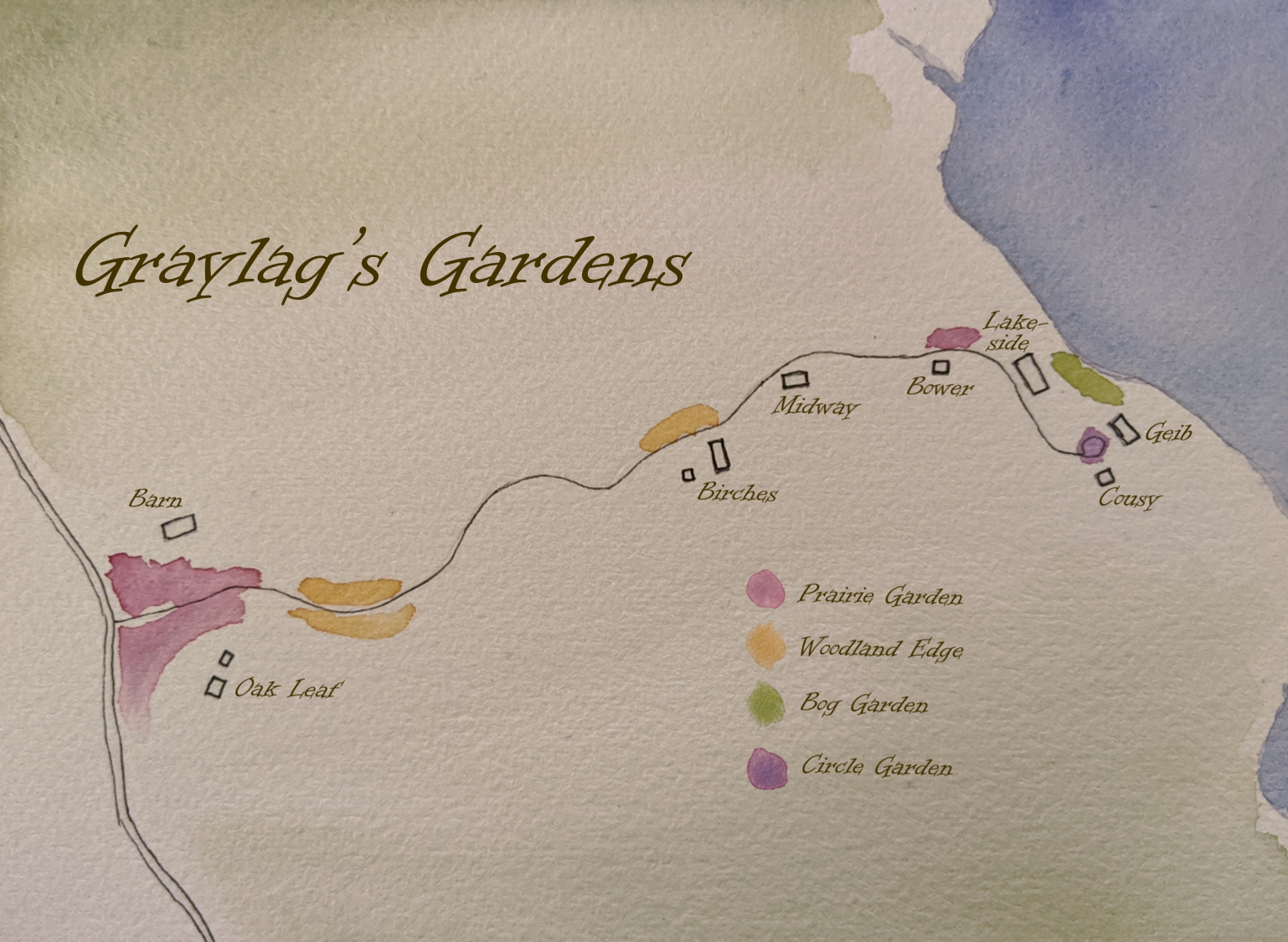
Native Gardens
Visitors to Graylag take delight in its gardens, filled with colorful and interesting flowers.
All of the plantings are native North American species, adapted so well to the environment that they thrive despite conditions that would be challenging for others. Many, once established, require little maintenance or watering. No pesticides are used, and the gardens provide important habitat for bees and other pollinators, birds, and wildlife.
Graylag Nature Preserve is indebted to horticulturist George Newman for his work with Graylag founder Carl Wallman in planning and propagating our gardens. George is a botanist and naturalist who has been cultivating and propagating native North American plants for over 60 years.
 Prairie Gardens
Prairie Gardens
The dry areas near the top of the driveway host prairie plants — fireweed, coreopsis, amsonia, butterfly weed, liatris, bee balm — a colorful display throughout the summer and early fall. One favorite here is Blue-Ridge Buckbean (Thermopsis caroliniana), a tall plant with striking yellow flowers in late June. Native to the eastern United States, it is also called Carolina lupine or Bush Pea, and is closely related to the blue-flowered Baptisia (Indigo) that is also abundant here. This is a great plant for home gardens too – it is showy and beautiful, deer resistant, and as a legume, can help improve soil and plant health by fixing nitrogen from the atmosphere.
Woodland
As you wander downhill, into the wetter, woodsier, more shaded areas, you may find bloodroot, trillium, baneberry, wild geranium, and trout lily. Many of these plants bloom earlier in spring, when the trees are not yet fully leafed out and more sunlight can reach them on the forest floor.
Bog Garden
Near the shore of Wild Goose Pond, a simple boardwalk leads you into our bog garden. In addition to the sphagnum moss typical of many bogs, this garden contains Rose Pogonia — a beautiful native orchid — and Bog Jacob’s Ladder, two varieties of pitcher plants (carnivorous plants that may trap insects in their curled leaves), and a couple of the spectacular clumps of Grass of Parnassus.
